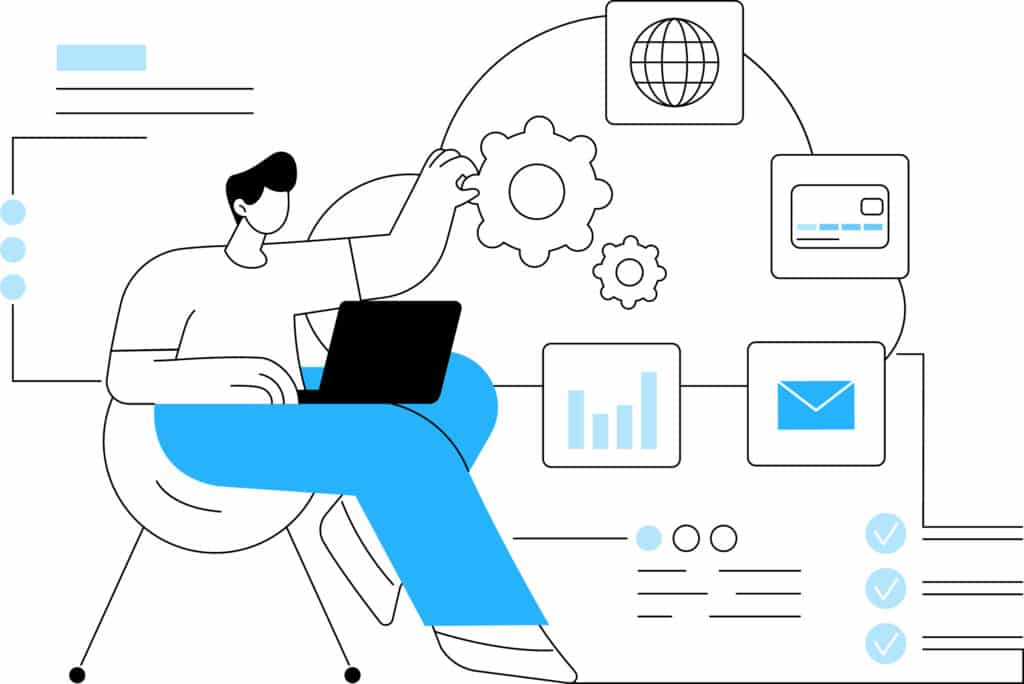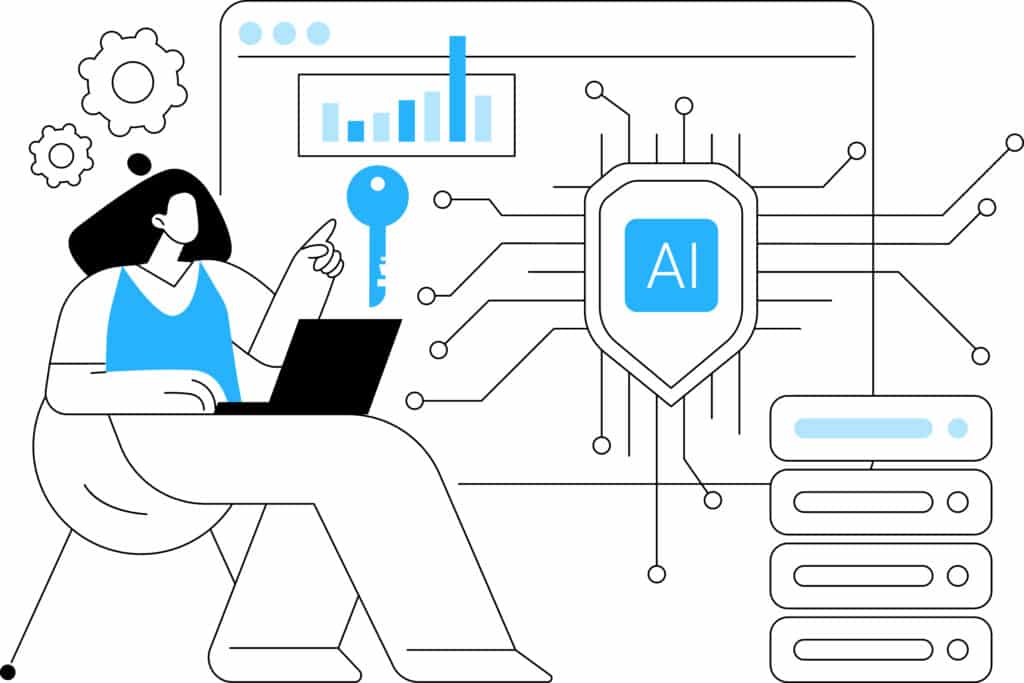Each year, Gartner’s Top Strategic Technology Trends offer a clear signal of where innovation is heading, and what it means for leaders in building resilient, driven organizations.
Last year, the spotlight was on AI-driven automation and adaptive infrastructure. This year, Gartner’s Top 10 Strategic Technology Trends for 2026 highlight an even sharper focus on intelligent orchestration and domain-specific innovation, where AI doesn’t just assist but becomes deeply embedded in how industries think, decide, and operate.
Among the standout trends is Trend 5 Domain-Specific Language Models. This concept hits close to home for those working to reengineer and digitalize complex regulatory environments. By tailoring AI to specific domains, organizations can move beyond generic automation to systems that truly understand context, terminology, and intent.
In this blog, we unpack Gartner’s top trends for 2026 and take a closer look at Trend 5, which particularly resonates with our mission. This trend marks a turning point in how industries apply AI not just to automate tasks, but to deeply understand and reason within their unique regulatory and operational contexts.
Gartner’s Top 10 Tech Trends for 2026
Here are 10 trends that reflect how leading organizations are responding to complexity and opportunity in an AI-powered, hyperconnected world:
- AI-Native Development Platforms
- AI Supercomputing Platforms
- Confidential Computing
- Multiagent Systems
- Domain-Specific Language Models (DSLMs)
- Physical AI
- Preemptive Cybersecurity
- Digital Provenance
- AI Security Platforms
- Geopatriation

1. AI-Native Development Platforms
AI-native development platforms use generative AI to accelerate software creation, empowering small, agile teams or even non-technical domain experts to build applications faster and with built-in governance. These tools are reshaping software delivery through automation and collaboration between humans and AI.
Gartner insight: By 2030, 80% of organizations will evolve large software teams into smaller, AI-augmented groups.
2. AI Supercomputing Platforms
AI supercomputing platforms integrate CPUs, GPUs, AI ASICs, and neuromorphic computing to deliver unprecedented performance, efficiency, and scalability. These systems orchestrate complex workloads across machine learning, analytics, and simulation, accelerating breakthroughs in industries from biotech to finance.
Gartner insight: By 2028, more than 40% of leading enterprises will adopt hybrid computing paradigms into critical workflows, up from 8% today.
3. Confidential Computing
Confidential computing protects data in use by isolating workloads within trusted execution environments (TEEs). It allows secure data processing even on untrusted infrastructure, which is a crucial capability for regulated industries, cross-border operations, and multi-party collaboration.
Gartner insight: By 2029, more than 75% of operations processed in untrusted infrastructure will be secured in-use by confidential computing.
4. Multiagent Systems (MAS)
Multiagent systems are networks of specialized AI agents that collaborate to achieve shared goals. This modular approach enables organizations to automate complex workflows, reuse proven solutions, and scale more efficiently across distributed environments.
Gartner insight: Modular, specialized agents can boost efficiency, speed up delivery, and reduce risk by reusing proven solutions across workflows. This approach also makes it easier to scale operations and adapt quickly to changing needs.
5. Domain-Specific Language Models (DSLMs)
CIOs and CEOs are increasingly seeking greater business value from AI, yet generic large language models (LLMs) often fall short when it comes to specialized tasks.
Domain-Specific Language Models (DSLMs) are AI models trained or fine-tuned on specialized datasets designed for specific industries, business functions, or processes. They understand the context, terminology, and nuances unique to a given domain, delivering results that are more accurate, relevant, and compliant. DSLMs bridge the gap between generic AI and real-world enterprise needs by offering higher precision, lower costs, and stronger governance.
For organizations working to reengineer and digitalize regulatory environments, this shift is transformative. DSLMs make it possible to build AI systems that not only process information but also understand the logic behind regulations, supporting consistent, auditable, and explainable decision-making.
Building on this foundation, Be Informed’s RegTech platform applies domain-specific intelligence to model complex regulatory rules, enabling automated decision-making that is transparent, traceable, and compliant.
To see how domain-specific AI accelerates compliant digital transformation, explore Be Informed’s approach to regulatory reengineering and digitalization.
6. Physical AI
Physical AI brings intelligence into the real world, powering robots, drones, and smart machines that can sense, decide, and act autonomously. This trend drives measurable efficiency and safety gains in manufacturing, logistics, and infrastructure while also creating demand for new interdisciplinary skill sets that bridge IT and engineering.
Gartner insights: This shift creates opportunities for upskilling and collaboration but may also raise job concerns and require careful change management.
7. Preemptive Cybersecurity
As digital threats escalate, cybersecurity is shifting from reactive defense to proactive prediction. Preemptive cybersecurity leverages AI-powered analytics, deception, and automation to detect and neutralize threats before they occur, transforming how organizations manage cyber risk.
Gartner insight: By 2030, preemptive solutions will account for half of all cybersecurity spending, as organizations shift from reactive defense to proactive protection using AI-powered threat detection.
8. Digital Provenance
Digital provenance ensures that data, software, and AI-generated content can be verified and traced back to their source. It strengthens transparency and compliance across complex digital supply chains using attestation databases, watermarks, and software bills of materials (SBoMs).
Gartner insight: By 2029, organizations that do not invest in digital provenance will be exposed to compliance and sanction risks potentially amounting to billions.
9. AI Security Platforms
AI security platforms provide centralized visibility and protection across all AI systems for both in-house and third-party. They defend against AI-specific risks such as prompt injection, data leakage, and rogue agents, helping CIOs establish consistent governance and usage policies.
Gartner insight: By 2028, over half of enterprises will rely on AI security platforms to safeguard AI investments.
10. Geopatriation
In an era of rising geopolitical risk, geopatriation refers to shifting workloads from global public clouds to sovereign or regional infrastructures to maintain data control, privacy, and compliance. This movement supports regulatory alignment and builds trust with customers and governments.
Gartner insight: By 2030, over 75% of European and Middle Eastern enterprises will geopatriate their workloads, up from less than 5% in 2025.
Why these technology trends matter now
2026 marks a decisive moment for technology leadership. AI is no longer experimental. It’s integral to every business strategy. Yet as organizations scale AI, they face mounting challenges around regulation, ethics, and operational transparency.
Gartner’s Top 10 Strategic Technology Trends for 2026 are grouped into three overarching themes – The Architect, The Synthesist, and The Sentinel – reflecting how organizations build, orchestrate, and protect digital value:
- Build resilient and secure foundations for AI adoption.
- Orchestrate intelligent systems that drive adaptability and business value.
- Protect trust, reputation, and compliance in an increasingly complex world.
Organizations that embrace these principles will move beyond digital transformation toward digital accountability, ensuring every innovation is explainable, auditable, and ethically aligned.

From innovation to accountability
Gartner’s 2026 technology trends reinforce a defining truth: AI maturity is built on governance. The organizations that succeed won’t just innovate faster. They’ll innovate responsibly.
At Be Informed, we are advancing our RegTech platform with AI and domain-specific language capabilities to empower knowledge workers and compliance teams in regulated industries. Our model-driven approach turns complex regulations into automated, auditable workflows that ensure transparency, efficiency, and trust.
As AI reshapes the business landscape, we believe the future belongs to those who can turn compliance into a catalyst for innovation.









